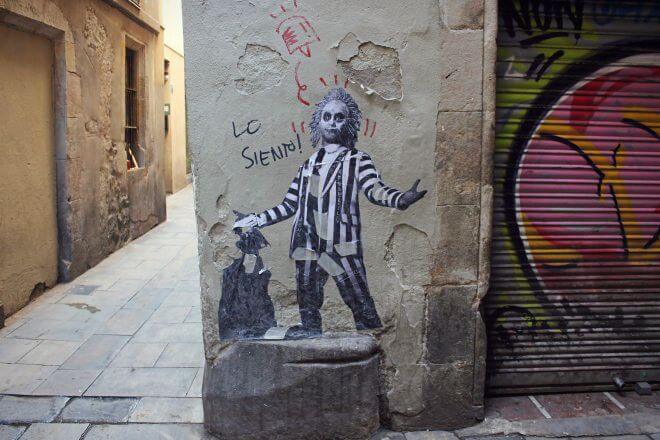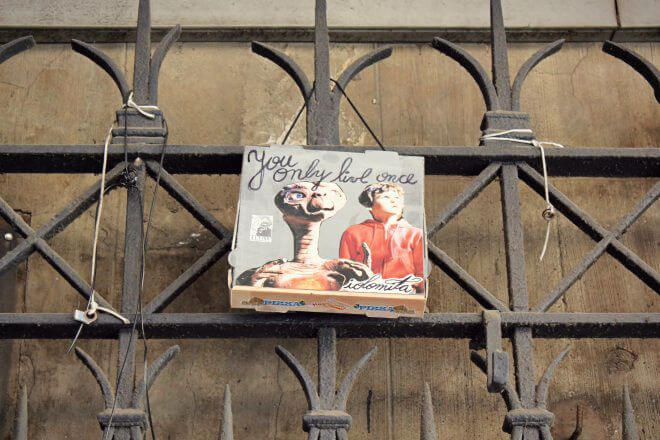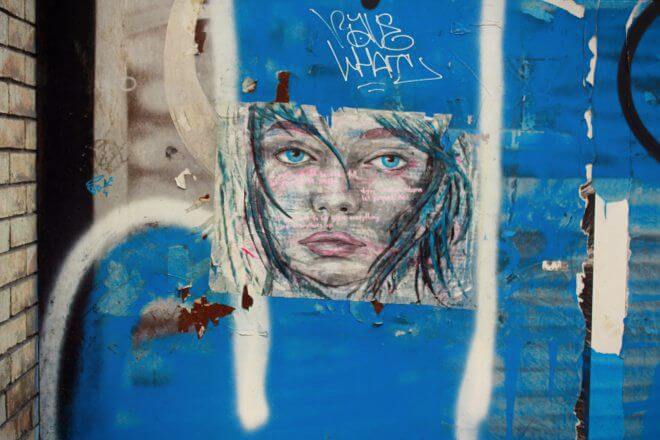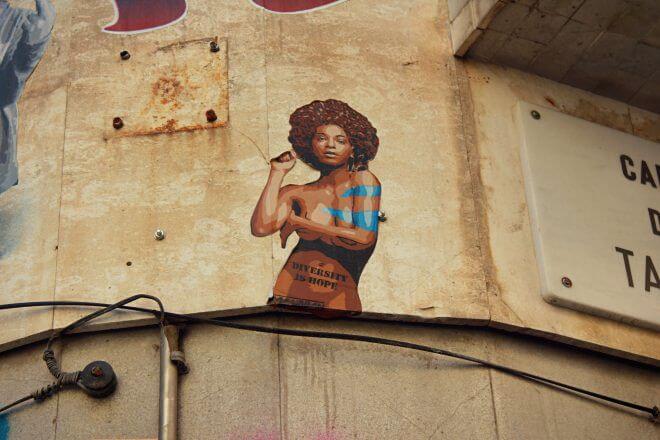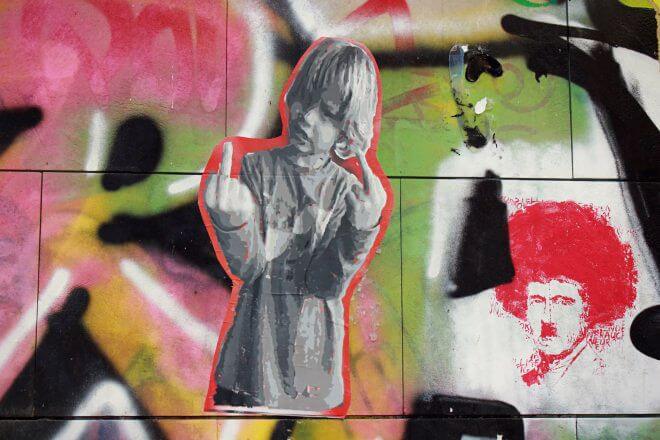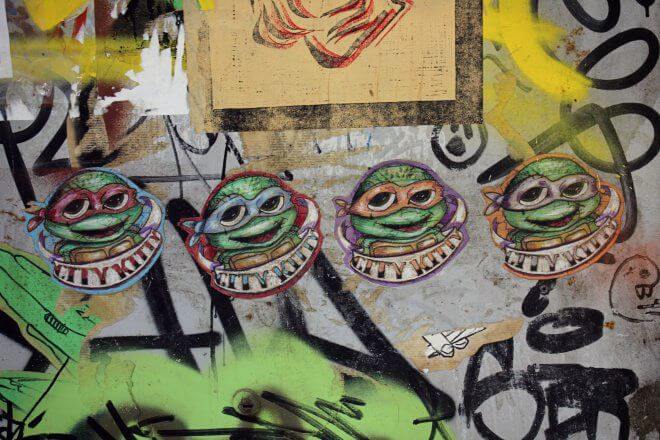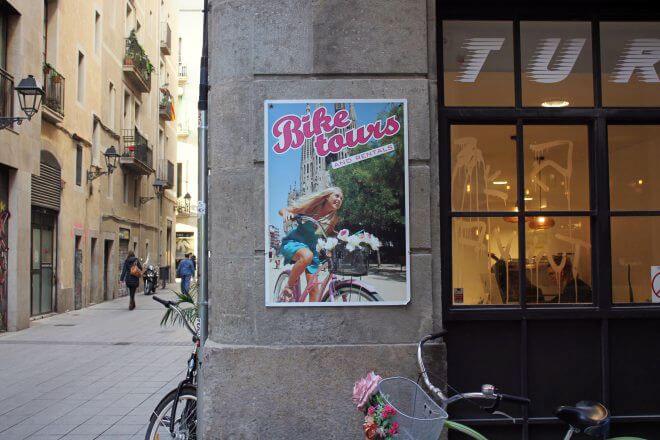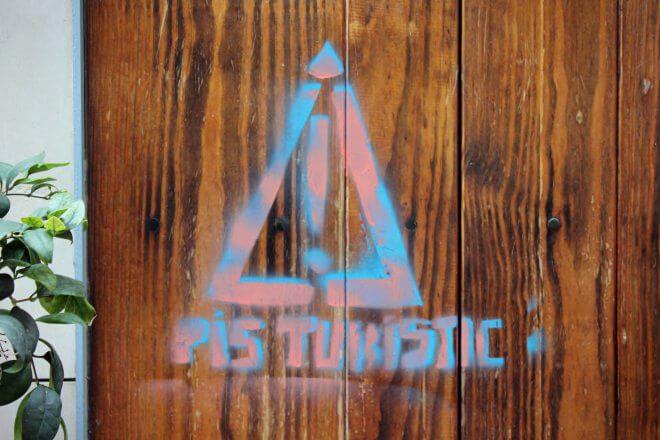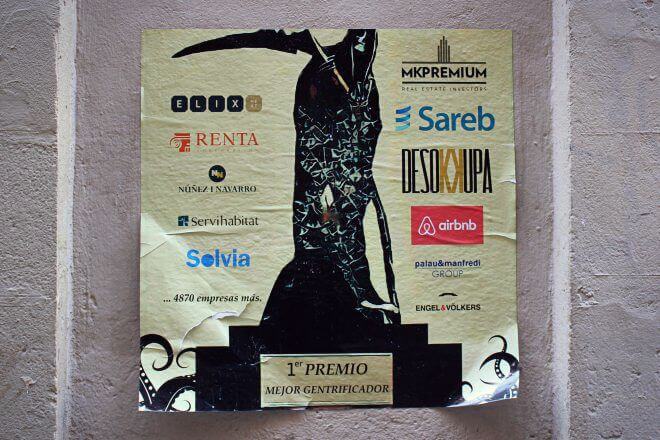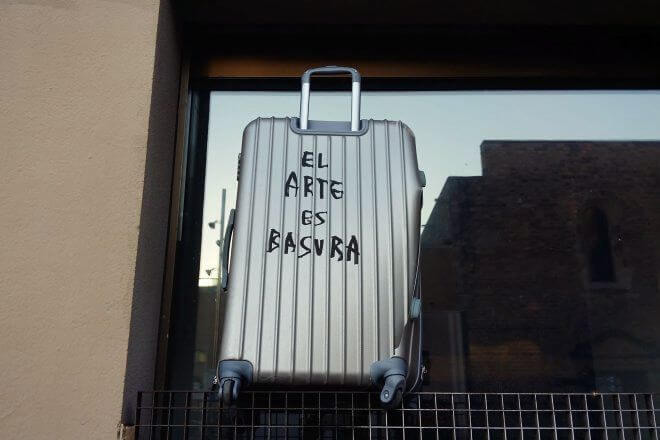The independence process has had a profound impact on urban space, but Barcelona also lends itself to other interpretations and offers many different paths that you can take spontaneously. For example, street art in Barcelona draws a colorful and inviting map to explore the city center by foot.
It’s just a matter of deciding which sign to follow along the narrow alleys of Raval and the Gothic Quarter, be it one of our distant ancestors taking his Koonian sausage dog for a walk or a masked woman waiting to be kissed.
The cityscape becomes engaging and understandable thanks to our ability to decode its messages. Street art in Barcelona is free and creative. It is a universe of forms that overlap, intersect, and mutate in unpredictable ways. Billboards and tacky shops fade into the background to show us another layer of reality.
Local artists such as Francisco de Pajaro, BL2A, El Xupet Negre, Cane, Konair and international guests of the likes of CAZ.L, City Kitty, and BustArt view the streets as their playground and use all available spaces as if they were a canvas, with a particular predilection for doorways, electric cabins, and street corners.
Their works will probably be quickly erased and washed away but can give us moments of reflection or simple visual pleasure destined to last a long time. On the other hand, Barcelona is also an exhibition site for social conflicts. Catalans do not hold back when it comes to protesting and making their voices heard.
Purple feminists, housing movements, and anti-tourism compete for a place of honor on the activist scene. Housing, in particular, is a “hot topic” here. Mayor Ada Colau was herself one of the founding members and spokespersons of the Platform for People Affected by Mortgages (PAH) and bank flash mobs against forced evictions and expropriations are still easy to spot around the city.
Thus, it shouldn’t come as a surprise that Airbnb is nominated as one of the “best gentrifiers of 2017” and that tourists are not always welcomed with open arms. The angst generated by massification led to various anti-tourism actions last summer and won’t be placated by the semi-empty tourist buses that roam aimlessly on the streets nor by the first big drop in flows certified by Frontur.
As a matter of fact, Barcelona and Catalonia remain the top tourist destination in Spain, despite terror attacks, political instability, and protests. The anti-tourist stickers with slogans in multiple languages and the marking of tourist flats only bring to mind tragic events and make me think that the cause deserves better than this. I’m leaving, but be assured that now Barcelona is mine as yours.
N.B.: please have a look at the two image galleries above to better appreciate the text.



